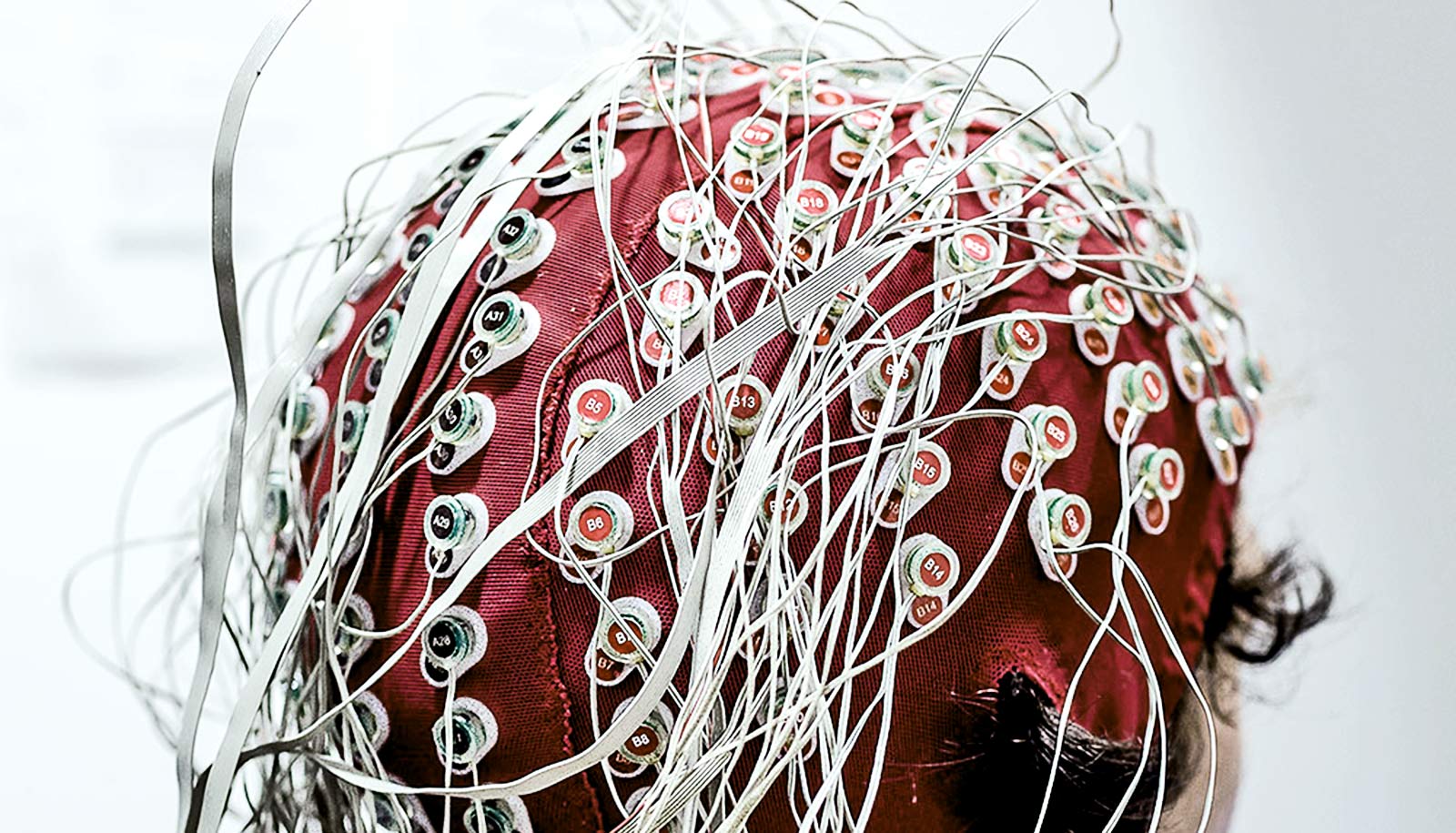Researchers have identified a brain signal that indicates whether a person is comprehending what others are saying. The researchers have shown that they can track the signal using relatively inexpensive EEG (electroencephalography) readings taken on a person’s scalp.
“When we had the same people come back and hear the same audio book played backwards, the signal disappears entirely.”
During everyday interactions, people routinely speak at rates of 120 to 200 words per minute. For a listener to understand speech at these rates—and not lose track of the conversation—the brain must comprehend the meaning of each of these words very rapidly.
“That we can do this so easily is an amazing feat of the human brain—especially given that the meaning of words can vary greatly depending on the context,” says Edmund Lalor, associate professor of biomedical engineering and neuroscience at the University of Rochester and Trinity College Dublin. “For example, ‘I saw a bat flying overhead last night’ versus ‘the baseball player hit a home run with his favorite bat.'”
Tracking this brain signal could have a number of “potentially significant” applications, Lalor says. They include:
- testing language development in infants;
- determining the level of brain function in patients who are in a reduced state of consciousness, such as a coma;
- confirming that a person in a particularly critical job has understood the instructions they have received (e.g., an air traffic controller or a soldier);
- testing for the onset of dementia in older people based on their ability to follow a conversation.
The research, which appears in Current Biology, applied machine learning to audio books that human subjects listened to. “One can train a computer by giving it a lot of examples and by asking it to recognize which pairs of words appear together a lot and which don’t,” Lalor explains.
“By doing this, the computer begins to ‘understand’ that words that appear together regularly, like ‘cake’ and ‘pie,’ must mean something similar. And, in fact, the computer ends up with a set of numerical measures capturing how similar any word is to any other.”
Babies know that other languages are for communicating
The researchers then correlated the numerical measures with brainwave signals that were recorded as participants listened to the corresponding sections of the audio books. They were able to identify a brain response that reflected how similar or different a given word was from the words that preceded it in the story.
This was verified in one experiment, for example, when subjects listened to Hemingway’s Old Man and the Sea. “We could see brain signals telling us that people could understand what they were hearing,” Lalor says. “When we had the same people come back and hear the same audio book played backwards, the signal disappears entirely.”
In another experiment, participants listened to a speech by Barack Obama that was “buried in a fair amount of background noise, so you can make out only a couple words here and there,” Lalor says. When participants then watched a video of the speech, and could use facial cues to better understand what Obama was saying, the signal “intensifies dramatically.”
In the paper, Lalor’s team notes that there is more work to be done to fully understand the full range of computations that our brains perform when we understand speech. They have begun searching for other ways that brains might compute meaning, how those computations differ from what computers do, and how best to apply this new approach.
These 2 brain systems work together as we learn
Additional researchers contributed from Trinity College and the University of Rochester.
Source: Rochester University



